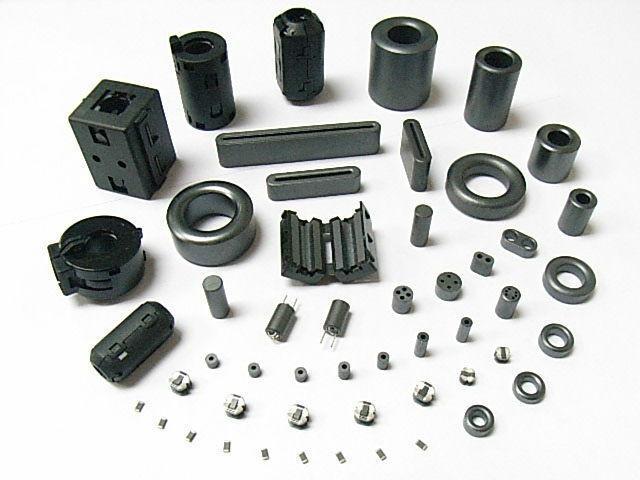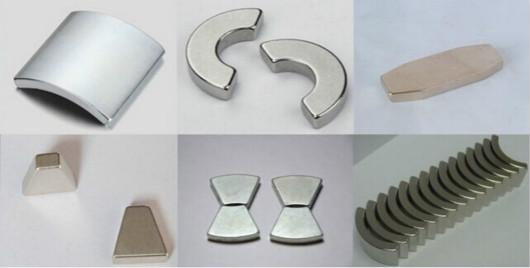How Sintered NdFeB magnets are Made?
How to judge the quality of sintered NdFeB magnets?
Sintered NdFeB permanent magnets, as one of the substances that promote contemporary technology and social progress, are widely used in the following fields: computer hard disk, nuclear magnetic resonance imaging, electric vehicles, wind power generation, industrial permanent magnet motors, consumer electronics (CD, DVD, cell phones, audio, copiers, scanners, video cameras, cameras, refrigerators, TV sets, air conditioners, etc.) and magnetic machinery, magnetic levitation technology, magnetic transmission, etc. industry.

In the past 30 years, the global permanent magnet material industry has been booming, the magnetic performance has been setting new records, and the number of material varieties and grades has been increasing.
How to judge the advantages and disadvantages of sintered NdFeB magnets?
The most comprehensive way to judge: magnet performance; magnet size; magnet coating.
First, the guarantee of magnet performance comes from the control of the raw material production process
1、According to the requirements of the enterprise manufacturing high-grade or mid-grade or low-grade sintered NdFeB, the raw material composition is according to the national standard to purchase raw materials.
2、The advanced production process directly determines the quality of the magnet.
At present, the advanced technology is Scaled Ingot Casting (SC) technology, Hydrogen Crushing (HD) technology, and Airflow Mill (JM) technology. Small capacity vacuum induction smelting furnaces (10kg, 25kg, 50kg) have been replaced by large capacity (100kg, 200kg, 600kg, 800kg) vacuum induction furnaces, SC (StripCasting) rapid condensation casting technology has gradually replaced large ingots (ingots with thickness greater than 20-40mm in the cooling direction), hydrogen crushing (HD) technology and Airflow mill (JM) has replaced jaw crusher, disc mill and ball mill (wet powder making), which guarantees the homogeneity of powder and facilitates liquid phase sintering and grain refinement.
3、Magnetic field orientation
4、Monitoring the quality of the production process is very important
It can be controlled by testing methods such as SC sheet thickness measurement and JM powder particle size distribution. The products all depend on the control of the production process, but customers must be confused, about how to judge the performance of the magnets.
The Institute of Metrology and Science has developed a variety of models of instruments for measuring the technical magnetic parameters of permanent magnetic materials. A pulse Magnetic Field Magnetometer (PFM) is a test instrument for testing ultra-high coercivity permanent magnets, mainly to accommodate high coercivity permanent magnets demanded by electric vehicle fields and large permanent magnet motors.
Customers can choose the NdFeB grade they need according to the magnet parameters Br (remanence), Hcb (coercivity), Hcj (endogenous coercivity), (BH)max (maximum magnetic energy product), and these four parameters are the criteria to determine whether the product is produced according to customer requirements.
Secondly, the guarantee of magnet size depends on the processing strength of the factory
There are various shapes of NdFeB magnets, such as round, cylindrical, cylindrical (with inner hole); square, square, square column; tile, fan, trapezoid, polygon, and various irregular shapes. Each shape of a permanent magnet has different sizes, and the production process is difficult to be formed in one go.
The general production process is Mr. output large size blanks, after sintering and tempering treatment, then through mechanical processing (including cutting, punching) and grinding, surface plating (coating) processing, and then magnet performance, surface quality and dimensional accuracy testing, and then magnetization, packaging, and factory.
1、Machining is divided into three categories.
(1) Cutting processing: cutting cylindrical and square magnets into the round and square pieces;
(2) Shape processing: round and square magnets are processed into fan-shaped, tile-shaped, or with grooves or other complex shapes;
(3) Punching processing: round and square bar magnets are processed into cylindrical or square bar magnets. The processing methods are: grinding and slicing processing, EDM cutting processing, and laser processing.
2、The surface of sintered NdFeB permanent magnet components generally requires smoothness and certain precision, and the surface of the magnet delivered in blank needs surface grinding processing. The common grinding methods for square NdFeB permanent magnet alloy are plane grinding, double end grinding, internal grinding, external grinding, etc. Cylindrical commonly used coreless grinding, double end grinding, etc. For tile, fan, and VCM magnets, multi-station grinding is used.
A qualified magnet not only needs to meet the performance standards but also the control of dimensional tolerance directly affects its application. The dimensional guarantee directly depends on the processing strength of the factory. The processing equipment is constantly updated with the economic and market demand, and the trend of more efficient equipment and industrial automation not only meets the growing demand of customers for product accuracy but also saves labor and cost, making it more competitive in the market.
The quality of magnet plating directly determines the application life of the product
Experimentally, a 1cm3 sintered NdFeB magnet will be corroded by oxidation if it is left in the air at 150℃ for 51 days. In a weak acid solution, it is more likely to be corroded. In order to make NdFeB permanent magnets durable, it is required to have a service life of 20-30 years, it must be subjected to surface anti-corrosion treatment to resist the corrosion of magnets by corrosive media. At present, the sintered NdFeB magnets are generally coated with metal plating, electroplating + chemical plating, electrophoretic coating, and phosphate treatment to prevent the magnet from the corrosive medium.
1, generally galvanized, nickel + copper + nickel plating, nickel + copper + chemical nickel plating three processes, other metal plating requirements, are generally applied after nickel plating and then another metal plating.
2, phosphating.
(1)When the NdFeB magnet products are not clear about the subsequent surface treatment method because of the long turnaround and preservation time, the use of phosphating is simple and easy;
(2) When the magnet needs epoxy glue bonding, painting, etc., glue, paint, and other epoxies organic adhesion requires a good infiltration performance of the substrate. The phosphating process can improve the ability to infiltrate the magnet surface.
3, the electrophoretic coating has become one of the widely used anti-corrosion surface treatment technology. Because it not only has good bonding with the porous magnet surface but also has corrosion resistance to salt spray, acid, alkali, etc., excellent anti-corrosion. However, its resistance to humidity and heat is poor compared to spray coating.
Customers can choose the coating according to their product’s working requirements. With the expansion of the motor application field, customers have demanded the corrosion resistance of NdFeB. The HAST test (also known as the PCT test) is to test the corrosion resistance of sintered NdFeB permanent magnets under a humid and high-temperature environment.
How to judge whether the magnet plating meets the requirements or not?
The purpose of the salt spray test is to do a quick anti-corrosion test on the sintered NdFeB magnets whose surface has been treated with anti-corrosion coating. At the end of the test, the sample is taken out from the test chamber, dried, and observed with eyes or magnifying glass to see whether there are spots on the surface of the sample, the size of the spot area box color change.
Conclusion
Customers only understand its production process, understand the factors required for the product, in order to correctly determine the product’s eligibility. To summarize briefly, it is the grasp of performance, control of dimensional tolerance, an inspection of plating, and evaluation of appearance.
